Best road bike handlebars: how to choose them and best reviewed handlebars
The best bike handlebars are an oft overlooked upgrade - we explain why they're so important and outline what to look for when you 're shopping for a new pair
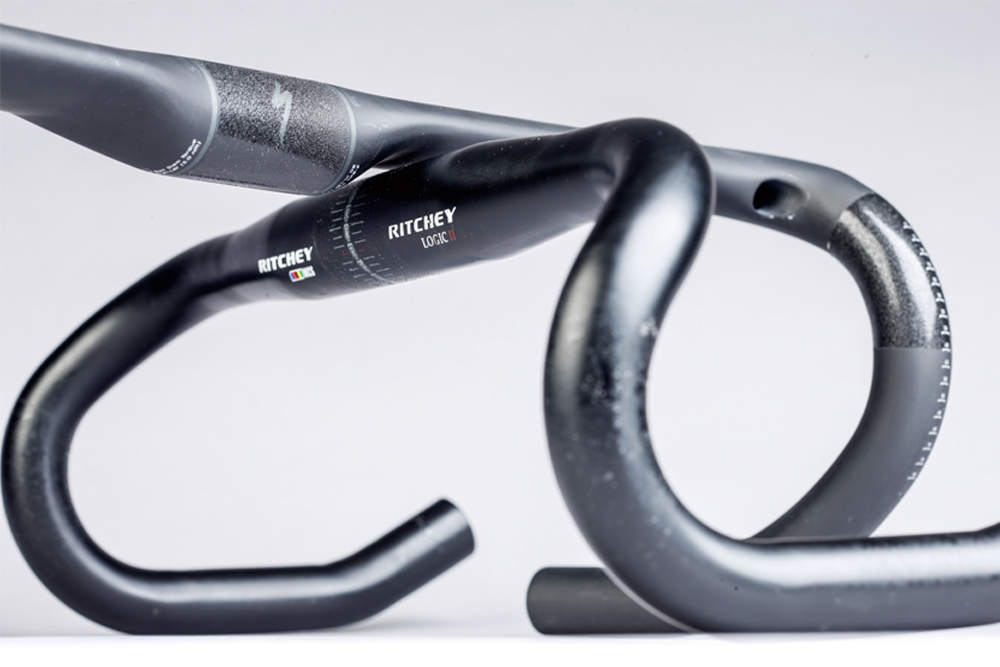
It can be easy to overlook the importance of handlebars when compared to the other touch points. As cyclists we tend to obsess over finding the right saddle and pedals but often keep the same stock bars that came with the bike.
But just like the saddle, choosing the right bars will provide you with greater comfort and performance, making them one of the best road bike upgrades you can make. The choice can be overwhelming; bars designed for long endurance rides differ considerably from those created for racing, where aerodynamics play a greater role in the design. There’s also material choices to consider, as well as the width.
Fortunately, help is at hand. We’ve tested and reviewed a wide range of road and all-road bars, enabling us to point you in the right direction for a pair to suit your needs. To help you find the right bars for you, we've selected six of our favourites - three carbon pairs and three alloy pairs. We've looked to include bars with varying attributes, including narrow width, aero and flared options. To further assist you we've also answered a few of the commonly asked questions when it comes to choosing the best road handlebars.
Don't forget, once you have chosen a new bar, you will need to wrap it in some of the best handlebar tape.
The Quick List
Carbon bars
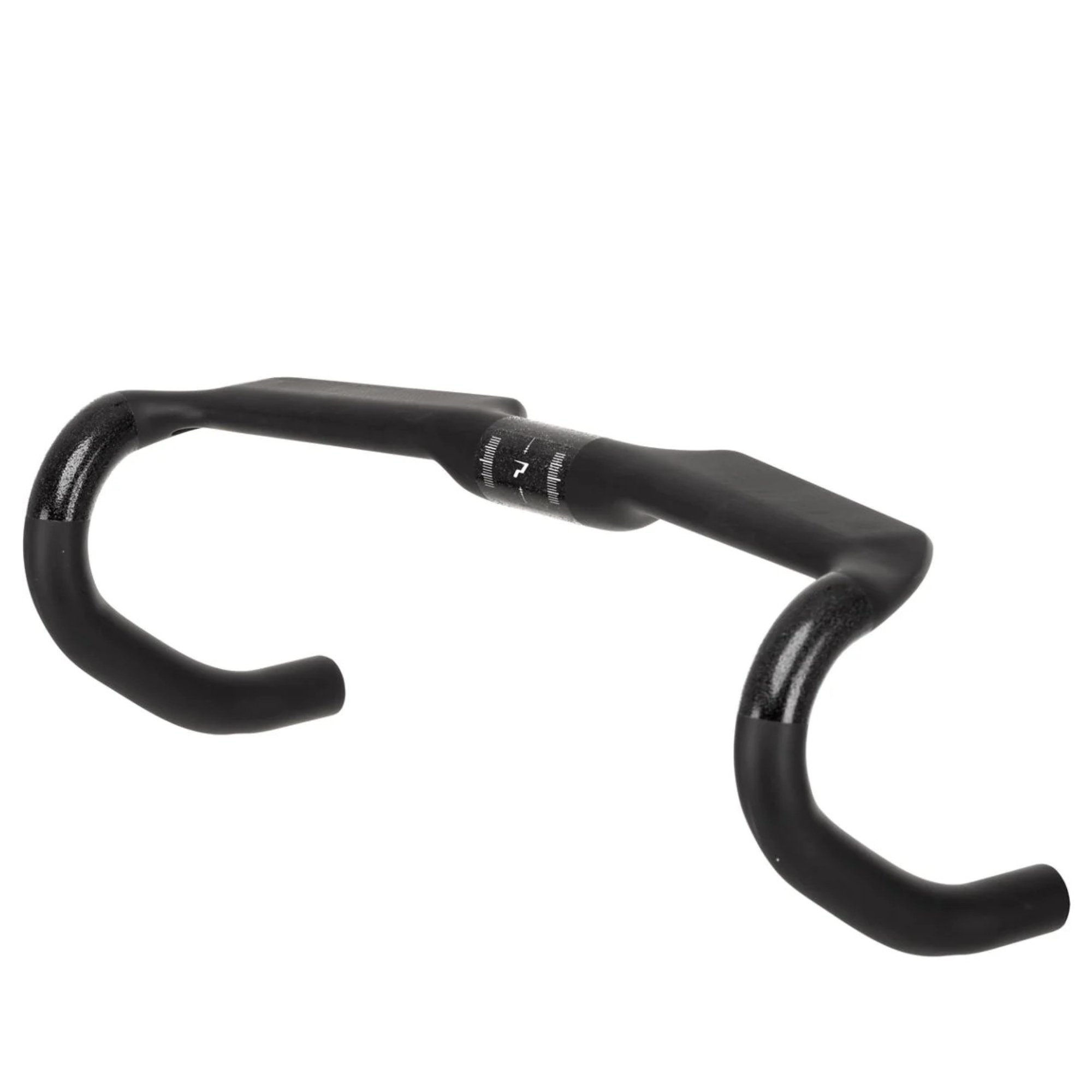
A lightweight aero bar with good cable integration and a comfort-inducing shape, at a price that's hard to beat.

Designed to enhance your aerodynamic position, they match a narrow hood width with some flare at the drops.
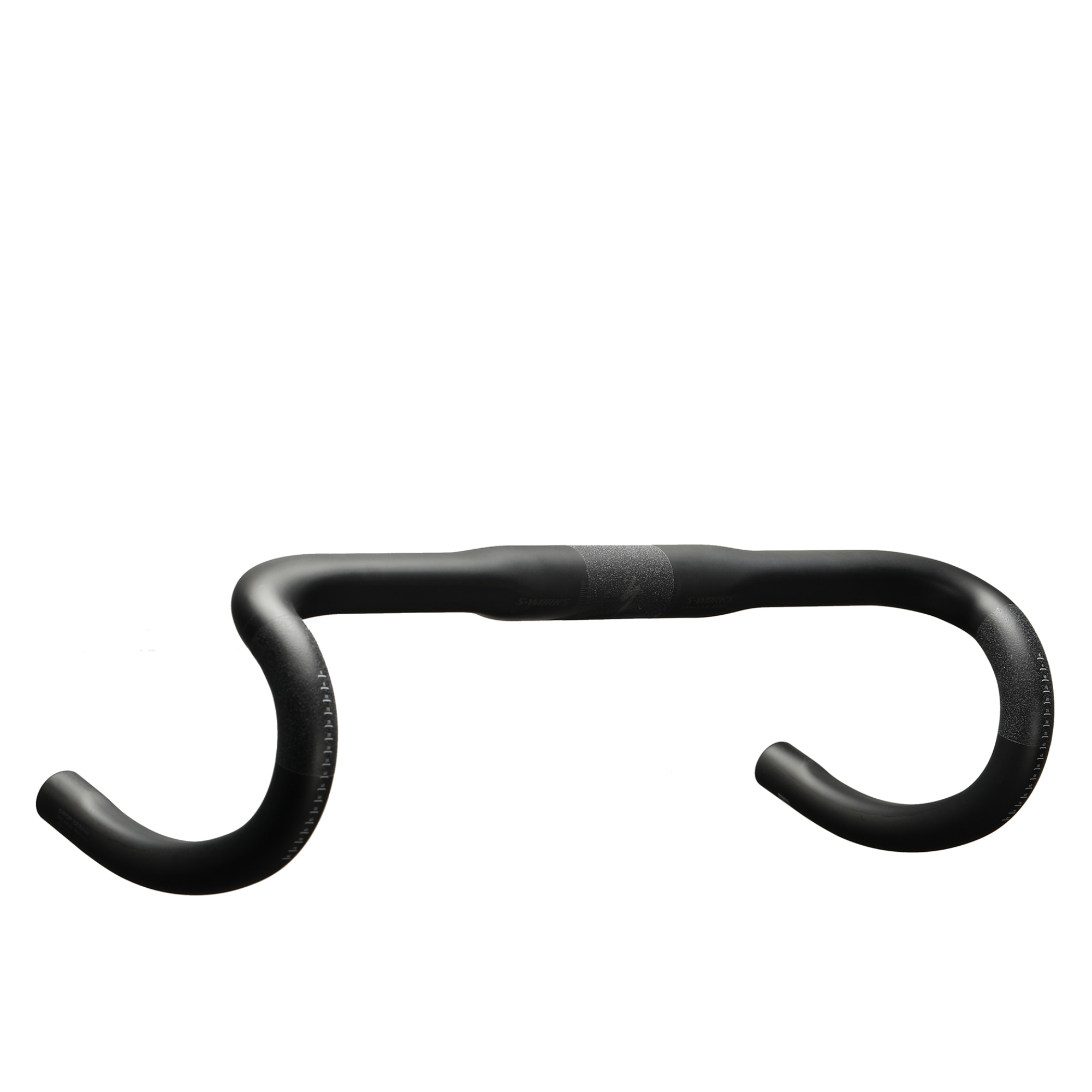
Offered in a 36cm width, the shape is great for smaller hands, but does come with an S-Works price tag.
Alloy bars

An exceptional all-road bar, combining bags of comfort and control in a lightweight package.
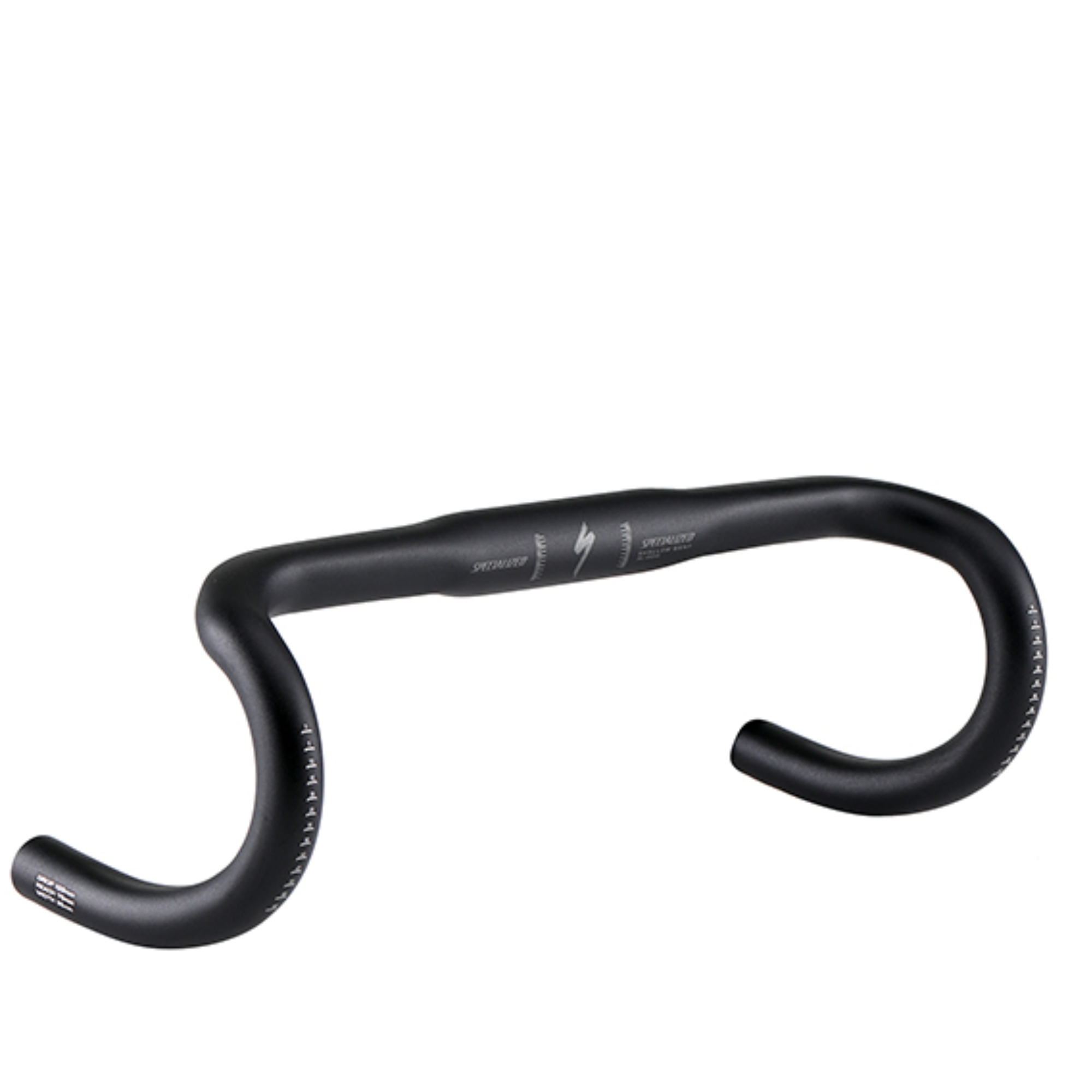
If you need a high-performing road bar with a shallow drop that's also budget friendly these won't disappoint.
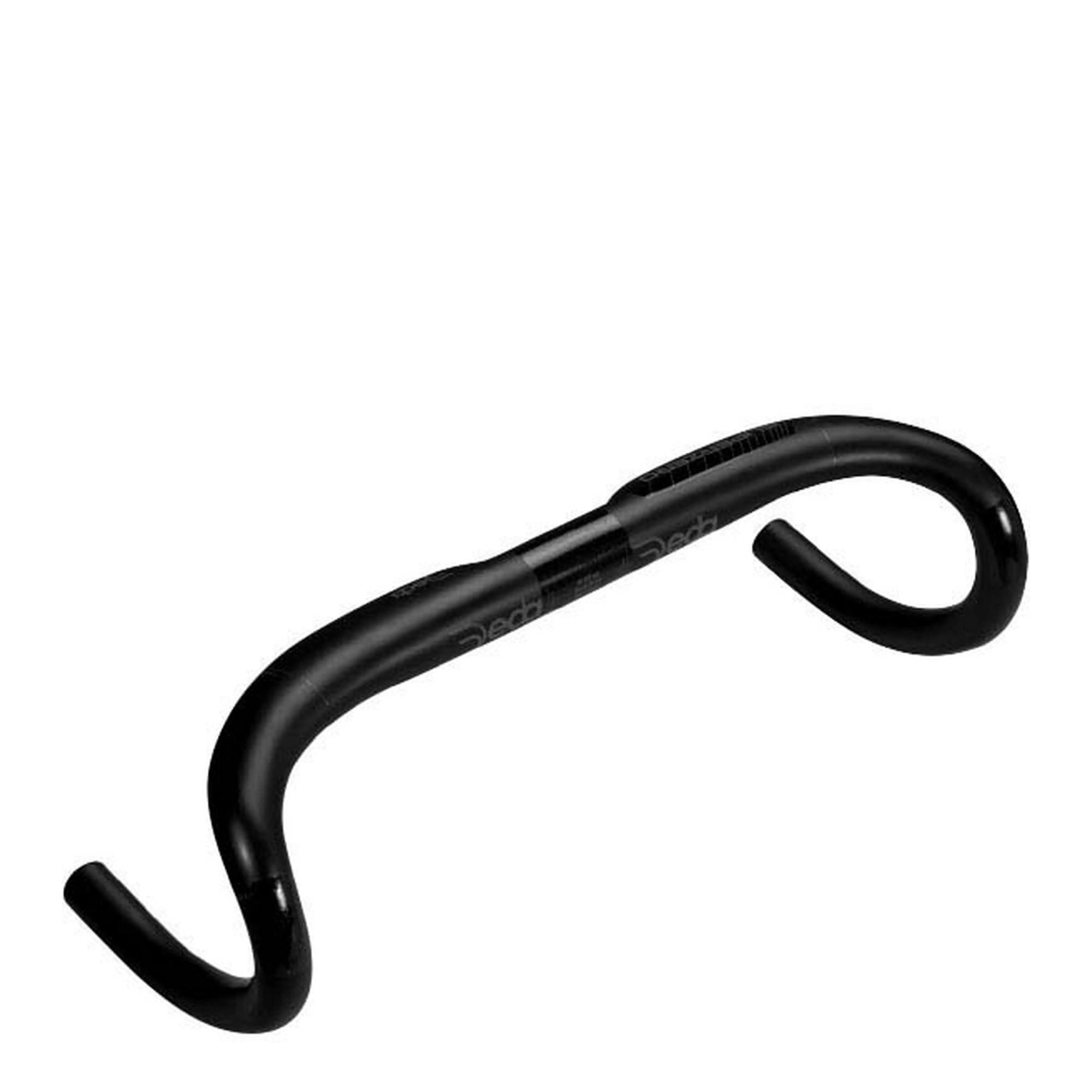
A stylish bar with solid aero properties and a compact shape thats aids smooth hand position changes.
The best carbon road handlebars: Our picks
Best budget carbon bars
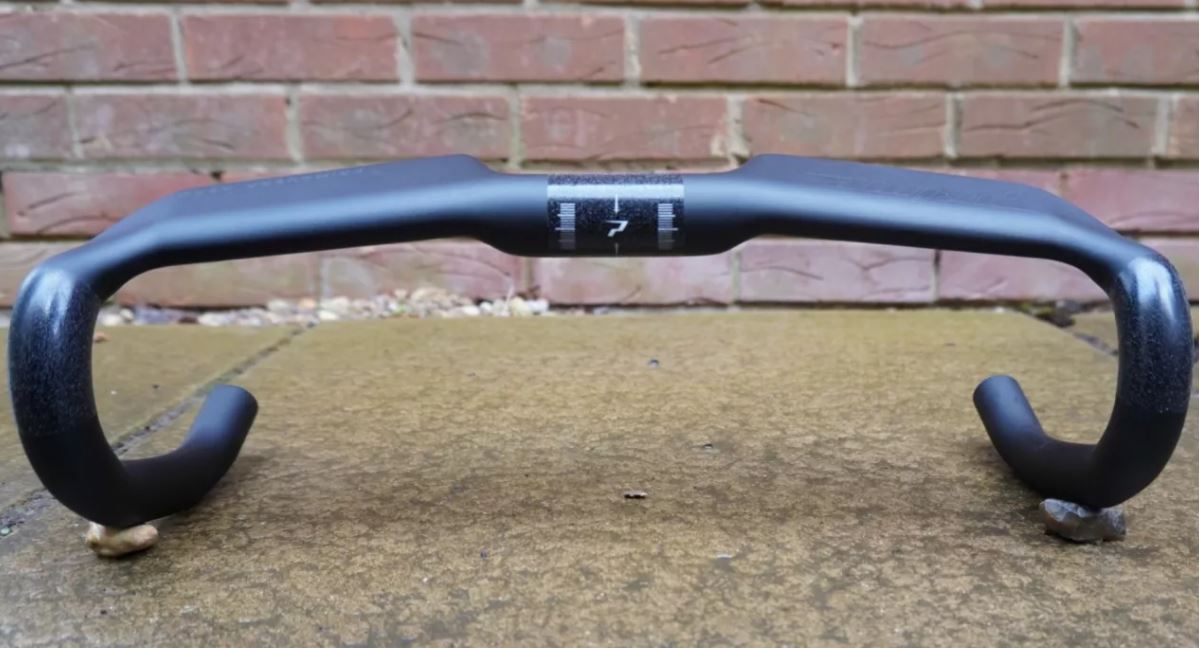
Specifications
Reasons to buy
Reasons to avoid
When we first reviewed the carbon Primavera Aero bars, the smallest size was a 38cm - but now, these start from 36cm and go all the way up to 44cm - giving riders of all shapes and sizes an affordable option in the carbon aero category.
As for the other dimensions, they opt for a relatively 'short and shallow' approach, combining a 122mm drop with a 76.5mm reach. We found the compact shape to be 'spot on'. Likewise, we also appreciated what we felt was just the right amount of stiffness. They felt rock solid, with no noticeable flexing, but importantly this didn't translate to harsh ride feel. Add to this the neat internal cable routing and exceptional value for a carbon option, and they come highly recommended. The only downside was a lack of markings to help out with set-up, but once you've got them fitted, there isn't much we can fault.
Read more: Prime Primavera Aero handlebars full review
Best flared carbon bars
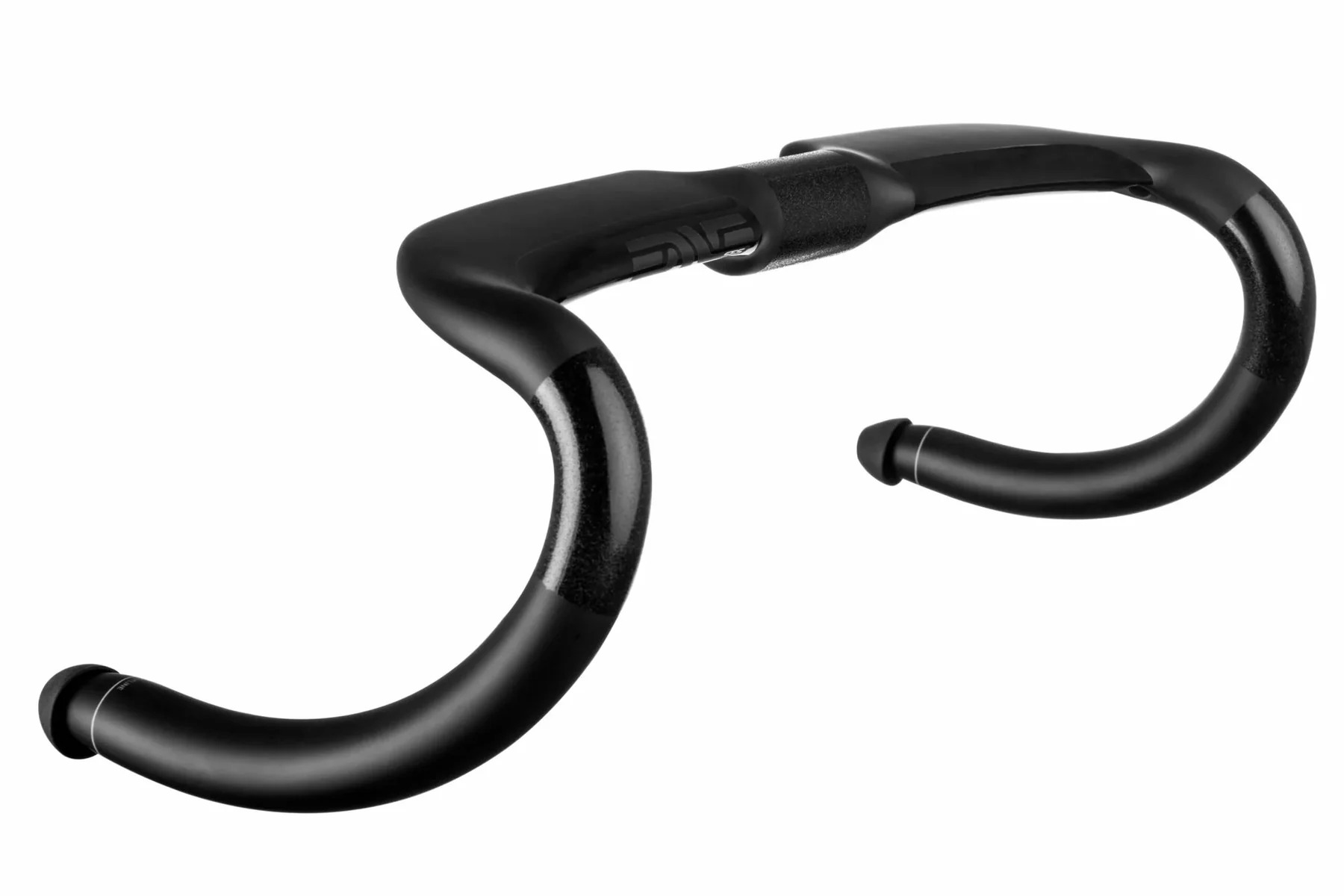
2. Enve SES Aero handlebars
Specifications
Reasons to buy
Reasons to avoid
If you perhaps thought that flared bars were for gravel riding only, then think again. A narrow hood width combined with a flare at the drops has become pretty popular in the pro peloton, thanks to its ability to aid a more aggressively aero riding position.
Enve were early adopters of this design and the fact that its SES Aero bars are still in production - and now with the updated 'IN-Route' system that's designed to work with most internally routed front ends - is proof of their appeal.
Typically when buying bars the stated width measurement relates to the hood width but here it's the drops. This means that the 42cm actually measures just 37cm at the hoods. If you're looking to narrow your front end for racing purposes, then it's likely the SES will be a good fit. However, aerodynamically advantageous positions aren't always the most comfortable to hold, meaning this might not be the best option if your looking for a versatile bar that can be used for endurance rides, for example.
We last reviewed these bars some years ago, and without the integrated cabling, so look out for a new review soon.
Best narrow width carbon bars
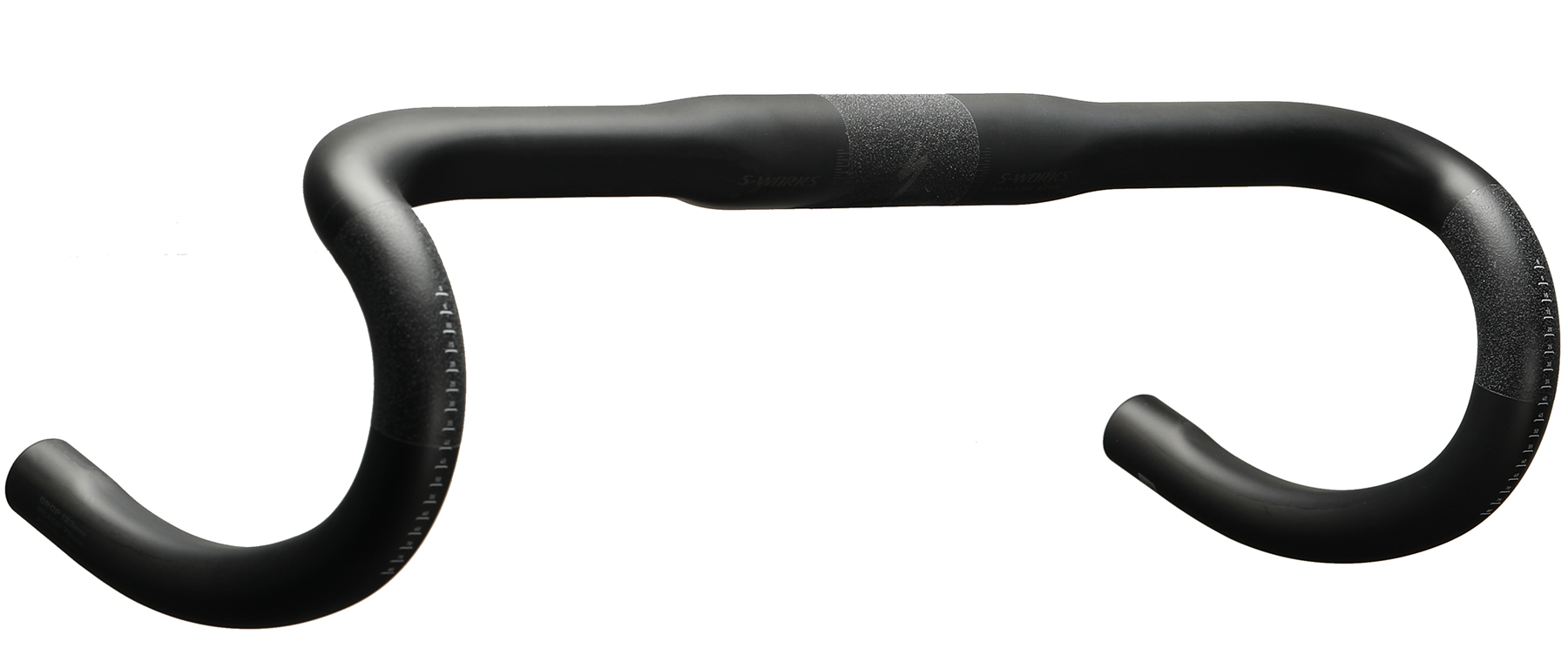
3. Specialized S-Works Shallow Bend handlebars
Specifications
Reasons to buy
Reasons to avoid
Finding narrow width bars isn't always the easiest, with many models starting at 38mm or 40mm. Fortunately Specialized has made a habit of releasing its bars in a 36cm width, which is ideal for those smaller in stature.
The S-Works Shallow Bend, as their name suggest, are.a compact offering. They blend a short 123mm drop with an equally short 75mm reach. Combine this design with the 36cm width option and you really have.bar that's well-suited to those with smaller hands. We loved this shape in the alloy version, finding it to be supremely comfortable.
Being a carbon bar - using Specialized's FACT construction - you also get the combination of stiff and light. In the 42cm width version they have a claimed weight of just 200g.
We'll be reviewing the bars soon so check back for more details.
The best alloy road handlebars: Our picks
Best all-road bars
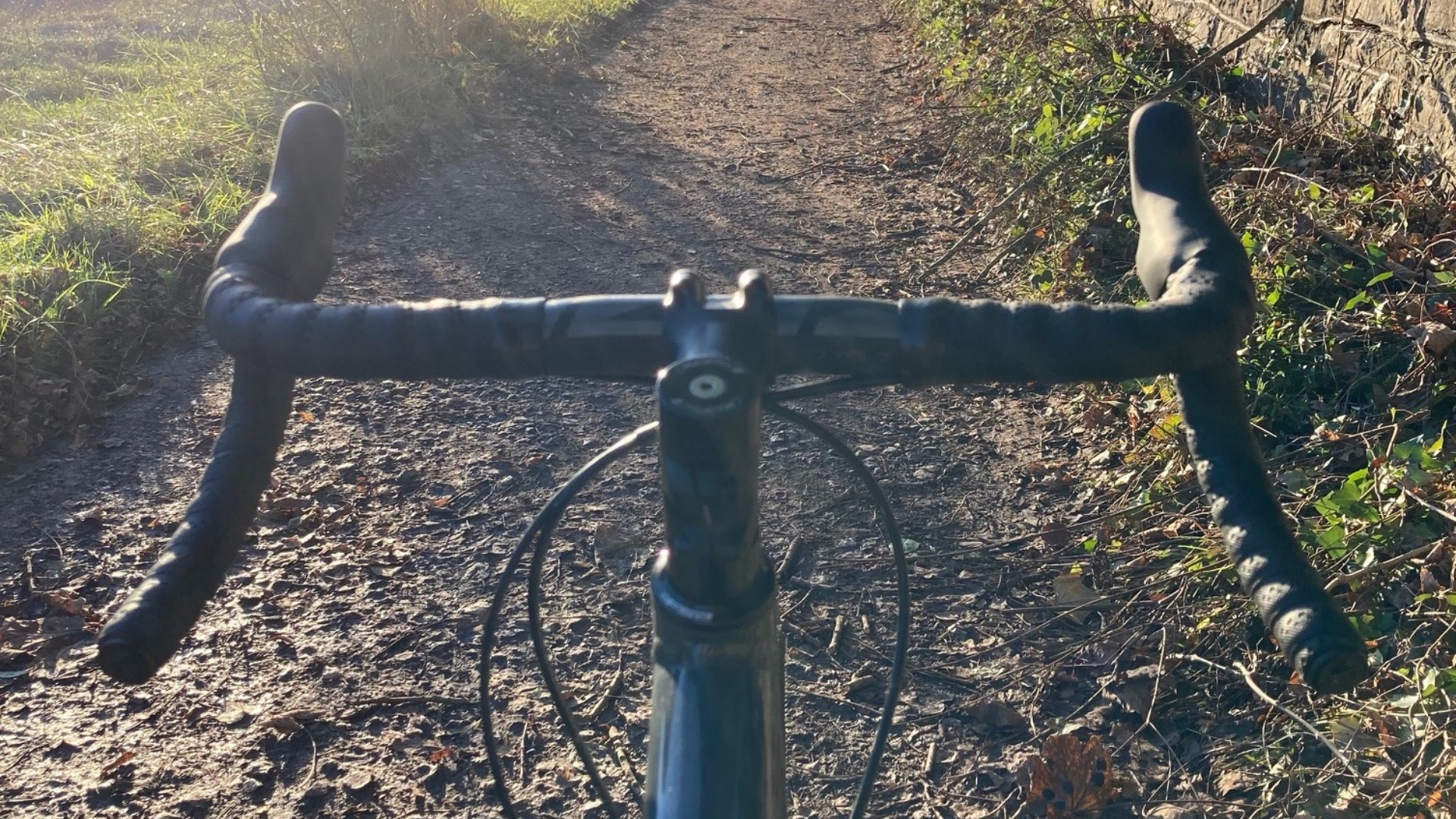
Specifications
Reasons to buy
Reasons to avoid
While many gravel bars offer a significant amount of flare in the drops for better control on off-road terrain, there are a few options that are well suited to road riding too - and Zipp's SL-70 XPLR bars are possibly the best example.
The 11-degree outsweep and five degrees of flare at the drops adds control and comfort without producing a extreme position at the hood, as some flared bars do. Combined with the short and shallow reach and the ergo tops and you have what we found to be a perfect all-road bar, ideally matched to long rides over less than perfect tarmac.
Read more: Zipp Service Course SL-70 XPLR handlebar full review
Best shallow drop bars
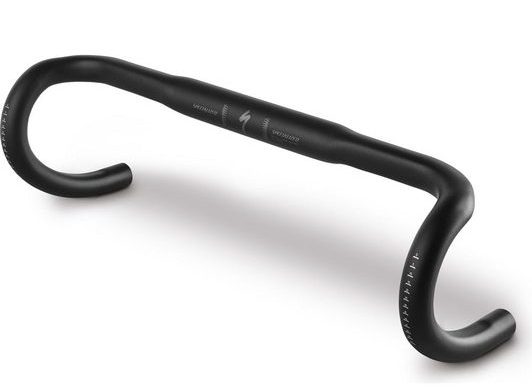
Specifications
Reasons to buy
Reasons to avoid
As with Specialized's carbon shallow drop, the alloy version are offered in a 36cm width size and feature the same design that's ideal for riders with smaller hands, thanks to the shallow drop of 123mm, and the short reach of 75mm.
However, unlike the carbon option, these are keenly priced making them an inexpensive upgrade or a good option for a race bike, where a crash can prove costly in more ways than one of you're riding carbon fibre bars. Being made from butted aluminium they're strong but still impressively light - when we reviewed the bars out 36cm size tipped the scales at just 263g.
Read more: Specialized Expert Alloy Shallow Bend handlebars full review
.
Best aero alloy handlebars
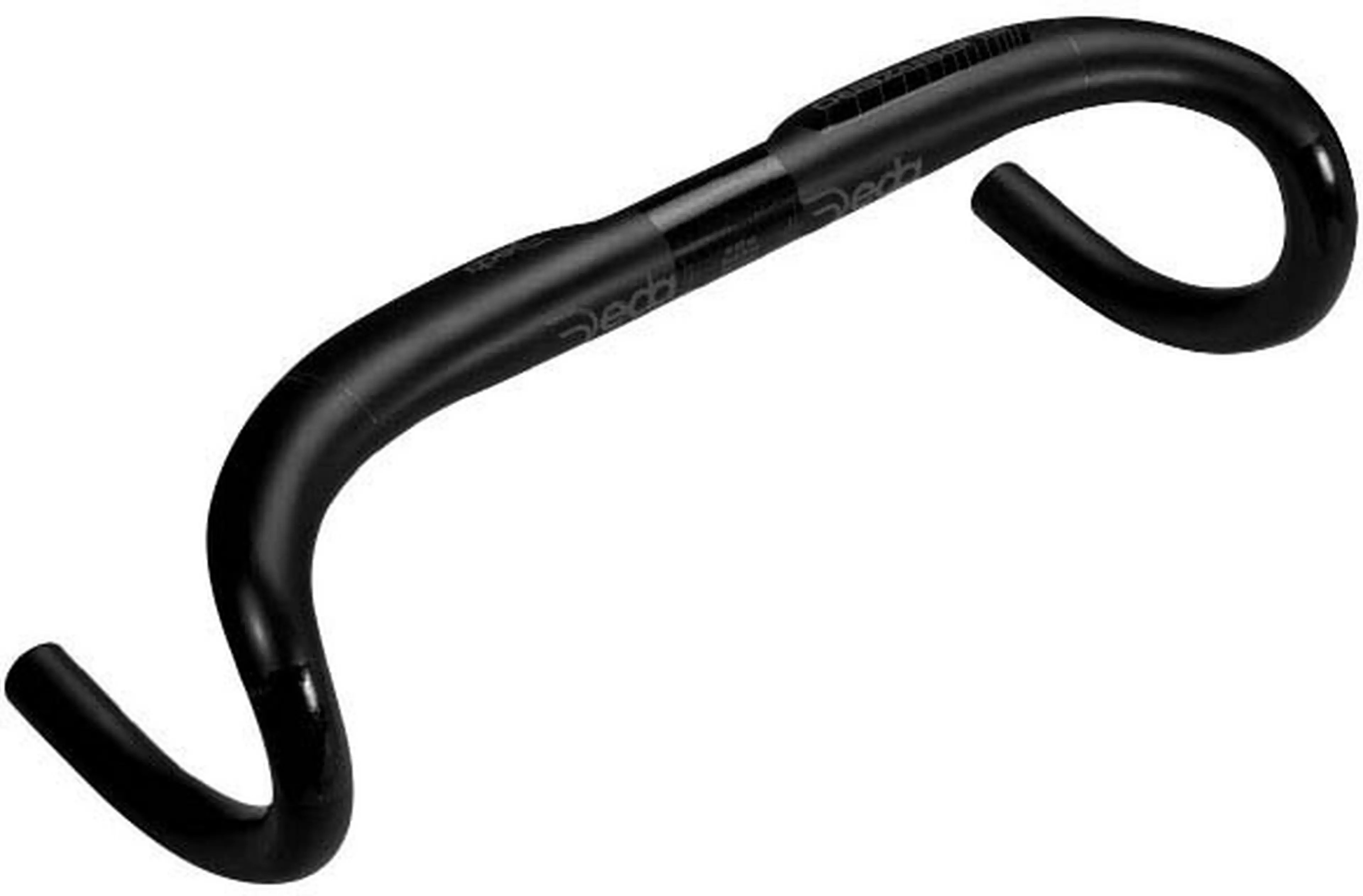
3. Deda Superzero DCR alloy handlebars
Specifications
Reasons to buy
Reasons to avoid
Deda's Superzero DCR are an affordable aero handlebar that are designed to mimic the aero styling and performance of the Italian's brands far more expensive carbon options.
They feature the flat profile that you'd expect from a bar that's designed to reduce drag. Deda's Rapid Hand Movement shape is in play here - this means a shallow drop and short reach created for cyclists who like to change hand position often. In terms of the numbers, this equates to a reach of 75mm and a drop of 130mm. Other features include internal cable routing and compatibility with Deda's DCR stems.
We'll be reviewing the Superzero DCR alloy handlebars soon, so check back for more details from our testing.
How we test
When reviewing handlebars the Cycling Weekly testers make sure to use them for as long a period as possible as well as undertaking rides of differing lengths. By doing so they can provide an indepth and insightful review that takes into account the pros and the cons of the product. When testing handlebars we take into consideration the price as well as how they perform and how easy they are to set-up and adjust.
Find out more about How We Test and our star rating system in our informative guide.
Advice
The sheer number of road bar options can make choosing the right pair for you a little tricky. To help you we’ve listed a number of the key considerations you’ll want to factor in before you buy.
Shape
Finding the right shape of bars makes all the difference when it comes to comfort. You’ll want to consider your riding style here. If you race and train hard then you’ll probably be concerned with aerodynamics. Bars with a deeper drop and longer reach will help get you lower on the bike which should translate to a more aero position. However, if you’re an endurance rider then you might benefit from a shallow drop and shorter reach, perhaps with some flare at the drops, too. Other considerations include the style of the tops - a flatter, aero profile can be more comfortable for some than the traditional round profile.
Width
The best road bike handlebars typically come in a range of widths, normally in 2 cm increments. You’ll want to consider your build when selecting the right width but perhaps more importantly, as above, your riding preferences. Racing cyclists tend to lean towards narrow bars, 38 or 36cm, that promote tucked in elbows to improve aerodynamics. Leisure riders may prefer a wider bar, say 42 or 44cm, which can help to open the chest up and improve comfort over longer distances.
Material
We’ve highlighted both carbon and aluminium bars in this guide. The former are more expensive but are typically lighter. However, the best alloy bars are also lightweight and the difference can be just a few grams. If you race at weekend you might opt for an alloy bar that’s cheaper to replace after a crash. Carbon bars also promise some added vibration dampening but this isn’t always easy to notice, or at least attribute solely to the bars. If you’re after a more comfortable ride then tyre choice and the pressure you run them at will likely deliver better results for less cost.
One or two-piece?
One-piece cockpits have become popular over the last few years but they are generally more expensive and more difficult to adjust and maintain. Traditional bars that are fitted to a stem remain the best option for those on a budget as well as those who like to maintain their own bikes at home.
FAQs
How wide should my road bars be?
The bars that come specced on a new bike are an estimate based upon the average shoulder width of the average person riding a bike in your size.
As most cyclists will protest, none of us are truly average, so tailoring the bars to suit you is a good idea. This is particularly relevant for women who have bought a unisex bike over a female specific bike: most women have narrower shoulders compared to men of the same height so will want a narrower handlebar.
Bars that are too wide can put pressure on your neck and arms, and will make riding the bike feel a bit like driving a truck. To the contrary, narrow bars will make you feel cramped, but it's worth remembering that narrower bars will bring your elbows in, having quite a significant impact upon aerodynamics.
The rule of thumb when selecting the correct handlebar width is to measure the distance between the two bony bits on your shoulders - in more scientific terms the distance between your two acromioclavicular (AC) joints.
This measurement gives you a baseline - if it's 38cm, look for 38cm bars - and so on. However, personal preference and riding style play a role, too. If, for example, aerodynamics are important to you, perhaps opt one size down.
Some riders like the stability afforded by slightly wider bars - so you could opt to go one size up - to a 40cm bar. However, this will mean that you are having to move your arms out to reach the levers, causing your shoulder blades to collapse which can cause discomfort.
The standard approach is to measure from the centre of the drops, but some brands measure from the outside, meaning their 40cm bar could be a 38cm in the former approach. It's best to check what approach the manufacturer you have in mind takes.
What is the best road bar shape for me?
When it comes to handlebar width, though you can go up or down a bit depending on preference, there is a right and a wrong answer: too narrow or too wide will cause you pain and have bike fitters all over the world wincing. However, in the case of handlebar shape, it's much more down to personal preference.
Traditionally, road bars had a gentle round curve, which created a deep drop, putting the rider in a low position when off the hoods.
In recent years, compact handlebars have become more popular: these feature a straighter shape, which means the lower section of the drop is higher up. In the middle, are ergonomic bars: rounder than traditional bars, but they have a flat section in the centre which is ideal for hand positioning.
Choosing the best handlebar shape for you comes down to your riding style. If you're after fairly relaxed endurance rides, think compact.
If you want eyeballs out, nose to the bar time trial efforts and tend to hold the bars close to the bottom of the drops, think traditional.
Sitting in the middle, if you want a fair drop and tend to hold the bar right at its centre point, look for ergo bars where doing so won't put pressure on your wrists.
Different manufacturers will shape their bars their own way, and you'll also find adventure road bikes, gravel bikes and cyclocross bikes will sweep them out at the end to create a wider and more stable platform when riding in the drops.
What is the best material for road handlebars?
One of the biggest conundrums facing cyclists upgrading their handlebars is the question of what material to choose.
Carbon handlebars drop the weight of the bike and they're often 20 to 40 per cent lighter than their alloy brethren. The material can also be moulded to any shape, permitting it to be perfectly designed to suit the ideal ergonomic fit. Plus, the carbon layup can be fine turned to create the best mix between strength, low weight and compliance. All sounds perfect?
The problem with carbon handlebars is that they're much more expensive, and a bit more fragile. Though carbon can be very strong, if it's damaged, it's not always as readily apparent as it would be on an aluminium bar and could go undetected.
Not only that, carbon needs to be treated with more care in the workshop - or home workshop - and even if you're using one of the best torque wrenches for bikes it's easier to crack if the wrong settings are used. A further con is the simple fact that aluminium bars are a lot cheaper.
What are aero handlebars and do I need them?
Aero road bikes are becoming increasing popular, and the handlebar set-up plays a huge role in decreasing drag.
Handlebars that improve aerodynamics will often present a smaller surface area at the front, flattening out to create a longer surface area on the top.
This means they slice through the air more efficiently, and also has the added bonus of being comfortable to hold on a long climb. Plus, aero handlebars will be designed to cater for internal cable routing.
More premium versions will champion a high level of integration. The bar and stem may be one unit, and mounts for items such as cycling computers could be built in.
The bonus here is the watt saving. The downside is that if you decide you want to make a change to your fit with a shorter or longer stem, you'll need to fork out for an entirely new unit.
Is there a standard diameter for road handlebars?
An actually quite important yet seemingly boring housekeeping point. Standard diameter handlebars used to always measure 25.4mm - this refers to the centre point where the stem will attach.
However, some brands are choosing to beef them up to 31.8mm for improved stiffness. This is fine, but you'll need a stem with a matching clamp size: no one wants to arrive home with their new purchase to find they've not got a stem to fit.
The latest race content, interviews, features, reviews and expert buying guides, direct to your inbox!
Luke Friend has worked as a writer, editor and copywriter for over twenty five years. Across books, magazines and websites, he's covered a broad range of topics for a range of clients including Major League Baseball, Golf Digest, the National Trust and the NHS. He has an MA in Professional Writing from Falmouth University and is a qualified bicycle mechanic. He has been a cycling enthusiast from an early age, partly due to watching the Tour de France on TV. He's a keen follower of bike racing to this day as well as a regular road and gravel rider.